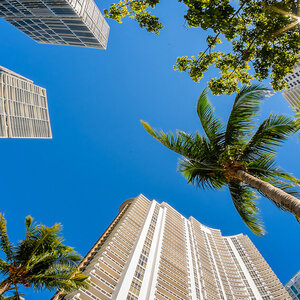The WPJ
THE WORLD PROPERTY JOURNALReal Estate Facts Not Fiction
Commercial Real Estate News

Most Commercial Property Investors in U.S. Are Net Buyers in 2017
Commercial News » Los Angeles Edition | By Michael Gerrity | March 10, 2017 9:00 AM ET
Los Angeles Retains Position as Number One Target
According to CBRE newly released Americas Investor Intentions Survey 2017, the prospect of increased U.S. economic growth combined with less regulation, means that investor sentiment for commercial real estate investment is marginally more positive than last year, despite the potential for rising interest rates.
- Industrial is Most Attractive Property Type for Investment in U.S.
- More Than Half of Institutional Investors Plan to Deploy $1 Billion in U.S. or More in 2017
Slow global economic growth that could undermine occupier demand (22%) was identified as the greatest risk factor for real estate investors, just ahead of rising interest rates (21%). Concern about property being overpriced and "a bubble waiting to burst" (16%) is a distant third among the list of potential threats. Investors are relatively unconcerned about the potential effects of government policy measures.
"While investors expect to largely maintain last year's investment activity levels, they also intend to retreat on the risk curve, becoming more conservative in strategy and risk appetite. This is counterbalanced by the search for yield," said Brian McAuliffe, president, Institutional Properties, Capital Markets, CBRE.
"Echoing concerns that arose at the beginning of 2015, investors perceive the global economy and rising interest rates as the greatest threats to property markets; they also continue to have concerns about asset pricing. If the anticipated level of inflow into commercial real estate materializes, this should to some extent counteract any pricing pressure resulting from a rise in interest rates," Mr. McAuliffe added.
Investors continue to be strongly interested in U.S. gateway markets. Los Angeles maintained its position as the most preferred metro for investment in 2017, ahead of Dallas/Fort Worth and New York City. Washington, D.C. moved up the ranks from eighth to the fourth most preferred metro for investment in 2017. Atlanta, Seattle and Houston are also viewed as attractive markets for investment. The majority of investors are focused on real estate in the Americas and do not intend to make asset purchases in other regions of the world.
Half of the investors surveyed (51%) are primarily searching for yield, relative to both government bonds (30%) and other asset classes (21%). This trend is even more pronounced among institutional investors, with 53% searching for yield.
Among the five different asset types by strategy--prime or core, good secondary, value-add, opportunistic, and distressed--value-add remains the preferred strategy (39%) and at similar levels to 2016. Investors' appetite for good secondary (non-core) assets increased significantly in 2017, ranking second. This displaced core, which was ranked second-highest in 2016. The relatively diminished appetite for core product is attributed to a combination of low cap rates (which are not expected to get lower), weakening property fundamentals, and the search for higher yielding assets.
Reversing 2016 trends, the industrial sector (38%) is viewed as the most attractive asset class for investment in 2017, replacing multifamily (28%), with office (18%) in third position. Reflecting the headwinds in the retail sector from e-commerce competition, only 8% of investors cited retail as an attractive option in 2017, significantly lower than the 17% in 2016. Among "alternatives", retirement housing was the only sector with an increase in interest, albeit small at 2%. Conversely, there were sharp drops in interest in real estate debt product and the leisure/entertainment sector.
"U.S. industrial has emerged as a preferred asset class for institutional investors, both domestic and foreign. Global investors are targeting the sector for acquisitions and development, especially opportunities with scale. Investors realize that the fundamentals are robust with record-setting metrics for net absorption and rental rate growth, while new economic drivers such as e-commerce and the 'Last Mile' are creating even more growth in the sector," said Jack Fraker, vice chairman and managing director, Industrial Properties, Capital Markets, CBRE.
Institutional investors (comprising sovereign wealth funds, insurance and pension funds) intend to be strong net buyers in 2017. More than half (54%) of all institutions plan to deploy more than $1 billion of capital in the Americas this year. Marking a departure from the wider pool of survey respondents, institutions are still primarily focused on core assets, closely followed by value-add. CBRE Research estimates that SWFs in particular are under-allocated to commercial real estate (with top 20 SWF's allocating an estimated 3% of total assets to real estate), which accounts for expected higher levels of capital deployment.
Sign Up Free | The WPJ Weekly Newsletter
Relevant real estate news.
Actionable market intelligence.
Right to your inbox every week.
Real Estate Listings Showcase
Related News Stories
Commercial Real Estate Headlines
- U.S. Commercial Real Estate Lending Rebounds Sharply in Early 2025
- U.S. Multifamily Housing Confidence Declines in Early 2025
- Asia Pacific Commercial Investment Holds Steady in Early 2025
- Carnival Plans New Miami Headquarters Spanning Over 600,000 Square Feet
- Hong Kong Property Investors Take a Wait-and-See Approach Due to U.S. Tariffs
- U.S. Multifamily Buyer and Seller Sentiment Improves in Early 2025
- One Trillion Dollars of America's Commercial Property Loans Mature in 2025
- U.S. West Coast Dominates Self Storage Demand
- Phoenix, Orange County and Inland Empire Emerge as Leading U.S. Industrial Markets
- U.S. Mega Distribution Centers Leasing Activity Grew in 2024
- U.S. Commercial Borrowing to Increase to $583 Billion in 2025, Up 16 Percent Annually
- Demand for U.S. Life Sciences Space Spikes 28 Percent Annually in Late 2024
- Multifamily Property Sector in America Rebounding
- Asia Pacific Commercial Property Investment Spikes 23 Percent in 2024
- U.S. Commercial Property Market Primed for Growth in 2025
- Architecture Industry Sees Mixed Signals as 2025 Approaches
- Global Data Center Demand Spikes in 2025
- 2025 Prediction: U.S. Commercial Investment Recovery Expected to Gain Traction
- Holiday Retail Sales for 2024 to Hit Record $1 Trillion
- Tech, AI Industries Drive Largest Share of Office Leasing Activity in U.S.
- Commercial Real Estate Lending in U.S. Enjoys Strong Growth in Q3
- U.S. Multifamily Market Begins Recovery in Q3
- Commercial Investment in Japan Spikes 24 Percent Annually in Q3
- Despite Return-to-Office Mandates, U.S. Office Vacancies Continue to Rise
- PROPSIG Tech Startup Acquired by World Property Data
- U.S. Commercial Mortgage Debt Hits $4.7 Trillion in Q2 as Delinquencies Increase
- Hong Kong Class A Office Rents Continue to Downtick in Mid-Summer
- U.S. Office Landlords Tenant Concessions Decline for First Time in 4 Years
- U.S. Commercial Mortgage Originations Spike 27 Percent in Q2 Over Q1
- Phnom Penh's Commercial Office, Retail Markets Face Slowdowns in 2024
- Global Edge Data Center Market to Hit $300 Billion by 2026
- Commercial Property Transactions in Japan Dive 25 Percent Annually in Q2
- Delinquency Rates for U.S. Commercial Property Loans Downticks in Q2
- Megawarehouse Lease Deals in U.S. Increase in 2024
- Office Tenants' Flight to Quality Buildings Increases in 2024
- Commercial Lending in Japan Upticks 6 Percent Annually in Q1
- AI Driving Significant Global Data Center Growth in 2024
- Total U.S. Commercial Mortgage Debt Rises to $4.7 Trillion in Q1
- U.S. Commercial Mortgage Delinquencies Rise in Early 2024
- Asia Pacific Office Sector to Further Reprice Throughout 2024
Reader Poll
Marketplace Links
This website uses cookies to improve user experience. By using our website you consent in accordance with our Cookie Policy. Read More





